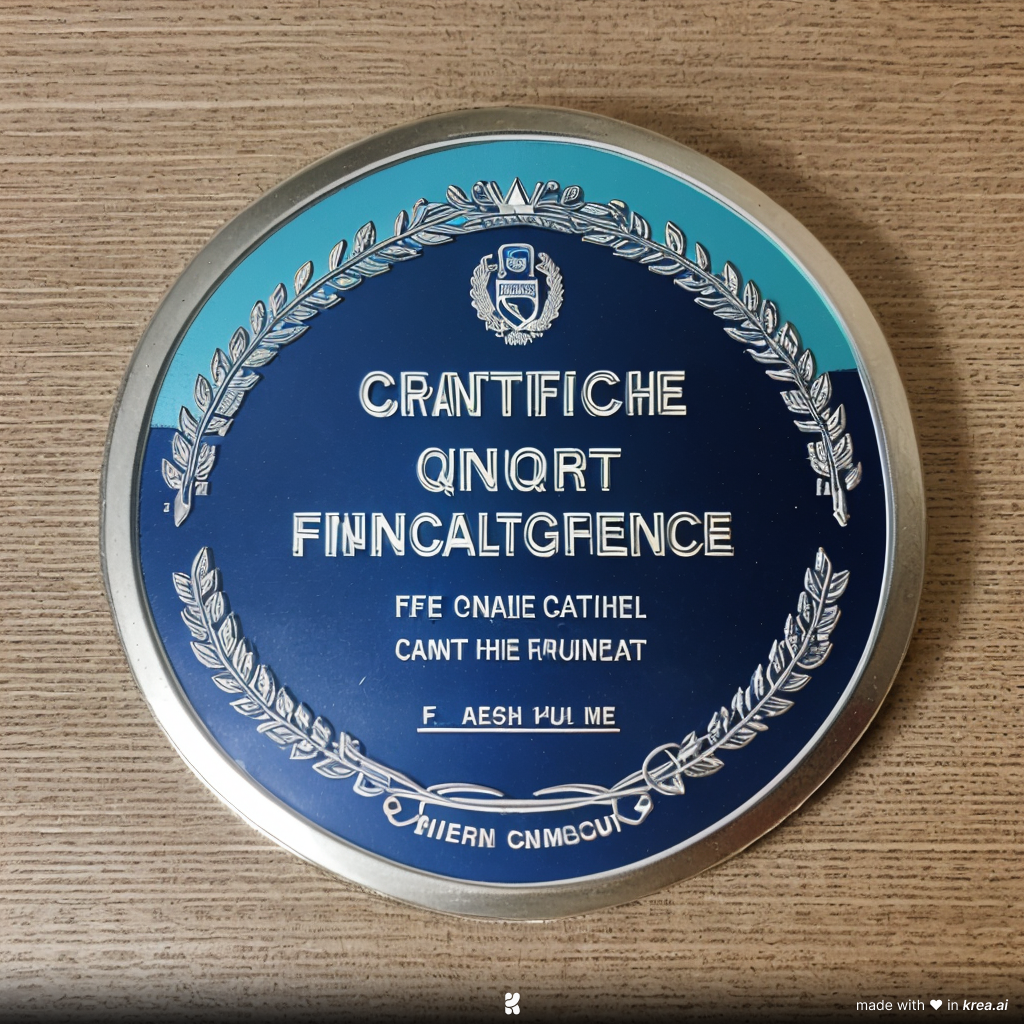We found 68 results that contain "906"
Posted on: #iteachmsu


Posted by
over 1 year ago
9 Types of Time Management Techniques
Achieving work life balance is possible with effective time management. Learning time management tips will not only help you manage your time better but also boost personal productivity. With that said, here are some time management strategies you can try:
1. Pareto Analysis (a.k.a., the 80/20 rule)
The 80/20 rule is a technique created by the Italian economist Vilfredo Pareto. It’s the idea that 20% of actions are responsible for 80% of outcomes. The goal of Pareto analysis is to help you prioritize tasks that are most effective at solving problems.
How it works:
List some of the problems you are facing. For example, maybe your grades are slipping.
Identify the root cause of each problem. Maybe your grades are slipping because you spend too much time on social media or any other sort of distraction.
Assign a score to each problem: Assign higher numbers to more important problems
Group problems together by cause: Group together all the problems caused by spending too much time on social media.
Add up the score of each group: The group with the highest score is the issue you should work on first.
Take action.
Types of people who will benefit from Pareto Analysis:
Problem solvers
Analytical thinkers
2. Pomodoro Technique
The Pomodoro Technique was created by entrepreneur and author Francesco Cirillo. This technique uses a timer to break down your work into intervals. Each interval is known as a Pomodoro, named after the tomato-shaped timer that Cirillo created.
How it works:
Choose a task you need to get done.
Set a timer (e.g., for 25 mins).
Focus on the task at hand.
When the timer rings, put a checkmark on a piece of paper.
Take a short break: Take a break for about three to five minutes. Go for a walk, grab a cup of coffee, do something non-work-related to give your brain a break.
Repeat steps two to five: Once you have completed this process four times, you can begin to take longer breaks (20–30 mins).
Types of people that will benefit from the Pomodoro Technique:
Creative thinkers
Those who feel burnt out from work/school
The Pomodoro technique doesn’t just teach your time management; it also teaches you in setting goals and how to achieve them. You’ll be able to better stick to your daily schedule and weekly schedule.
3. Eisenhower Matrix
Before Dwight Eisenhower became president in 1953, he served in the U.S. Army as an Allied Forces Commander during World War II. He was faced with difficult decisions every day that led him to invent what is now called the Eisenhower matrix, or the urgent-important matrix.
How it works:
Organize your task list into four separate quadrants, sorting them by important vs. unimportant and urgent vs. not urgent, as shown in the graphic below. Urgent tasks are those we feel need to get done immediately. Important tasks are those that contribute to your long term goals or values. Ideally, you should only work on tasks in the top two quadrants—the other tasks, you should delegate or delete.
Achieving work life balance is possible with effective time management. Learning time management tips will not only help you manage your time better but also boost personal productivity. With that said, here are some time management strategies you can try:
1. Pareto Analysis (a.k.a., the 80/20 rule)
The 80/20 rule is a technique created by the Italian economist Vilfredo Pareto. It’s the idea that 20% of actions are responsible for 80% of outcomes. The goal of Pareto analysis is to help you prioritize tasks that are most effective at solving problems.
How it works:
List some of the problems you are facing. For example, maybe your grades are slipping.
Identify the root cause of each problem. Maybe your grades are slipping because you spend too much time on social media or any other sort of distraction.
Assign a score to each problem: Assign higher numbers to more important problems
Group problems together by cause: Group together all the problems caused by spending too much time on social media.
Add up the score of each group: The group with the highest score is the issue you should work on first.
Take action.
Types of people who will benefit from Pareto Analysis:
Problem solvers
Analytical thinkers
2. Pomodoro Technique
The Pomodoro Technique was created by entrepreneur and author Francesco Cirillo. This technique uses a timer to break down your work into intervals. Each interval is known as a Pomodoro, named after the tomato-shaped timer that Cirillo created.
How it works:
Choose a task you need to get done.
Set a timer (e.g., for 25 mins).
Focus on the task at hand.
When the timer rings, put a checkmark on a piece of paper.
Take a short break: Take a break for about three to five minutes. Go for a walk, grab a cup of coffee, do something non-work-related to give your brain a break.
Repeat steps two to five: Once you have completed this process four times, you can begin to take longer breaks (20–30 mins).
Types of people that will benefit from the Pomodoro Technique:
Creative thinkers
Those who feel burnt out from work/school
The Pomodoro technique doesn’t just teach your time management; it also teaches you in setting goals and how to achieve them. You’ll be able to better stick to your daily schedule and weekly schedule.
3. Eisenhower Matrix
Before Dwight Eisenhower became president in 1953, he served in the U.S. Army as an Allied Forces Commander during World War II. He was faced with difficult decisions every day that led him to invent what is now called the Eisenhower matrix, or the urgent-important matrix.
How it works:
Organize your task list into four separate quadrants, sorting them by important vs. unimportant and urgent vs. not urgent, as shown in the graphic below. Urgent tasks are those we feel need to get done immediately. Important tasks are those that contribute to your long term goals or values. Ideally, you should only work on tasks in the top two quadrants—the other tasks, you should delegate or delete.
Posted on: #iteachmsu



Posted by
8 months ago

Predominantly hyperactive/impulsive type.
The student may:
o Appear to be in constant motion,
o frequently fidget or move in his or her seat,
o become restless during quiet activities,
o leave his or her seat when expected to remain seated,
o interrupt others and classroom activities,
o talk excessively, and/or
o fail to follow classroom procedures (e.g., blurt out answers without raising hand).
The student may:
o Appear to be in constant motion,
o frequently fidget or move in his or her seat,
o become restless during quiet activities,
o leave his or her seat when expected to remain seated,
o interrupt others and classroom activities,
o talk excessively, and/or
o fail to follow classroom procedures (e.g., blurt out answers without raising hand).
Disciplinary Content
Posted on: #iteachmsu



Posted by
over 1 year ago

ADHD and School interventions
https://education.wm.edu/centers/ttac/documents/packets/adhd.pdf
School interventions should include a team approach across multiple settings, consisting of both
preventive and intervention strategies.
Interventions must be based upon assessment data that includes information about the student’s strengths and needs as well as the environmental conditions in which her characteristics of ADHD occur.
Progress monitoring and strategy adjustments are critical to the success of any intervention plan (Wolraich & DuPaul, 2010).
https://education.wm.edu/centers/ttac/documents/packets/adhd.pdf
School interventions should include a team approach across multiple settings, consisting of both
preventive and intervention strategies.
Interventions must be based upon assessment data that includes information about the student’s strengths and needs as well as the environmental conditions in which her characteristics of ADHD occur.
Progress monitoring and strategy adjustments are critical to the success of any intervention plan (Wolraich & DuPaul, 2010).
Disciplinary Content
Posted on: #iteachmsu



Posted by
almost 2 years ago

Pollination
Pollination is the process in which the pollens are transferred from anther to stigma. The process of pollination can occur through a different medium.
The table mentioned below describes the different types of pollination along with their pollinating agents.
Pollination Process Pollination Medium
Malacophilous By snails
Chiropteriphilous By bats
Hydrophilous By water
Zoophilous By animals
Anemophilous By air
Entomophilous By insects
Ornithophilous By birds
Also Read: What is Pollination
For more detailed information on parts of a flower, its functions and its importance, explore at BYJU’S Biology.
Pollination is the process in which the pollens are transferred from anther to stigma. The process of pollination can occur through a different medium.
The table mentioned below describes the different types of pollination along with their pollinating agents.
Pollination Process Pollination Medium
Malacophilous By snails
Chiropteriphilous By bats
Hydrophilous By water
Zoophilous By animals
Anemophilous By air
Entomophilous By insects
Ornithophilous By birds
Also Read: What is Pollination
For more detailed information on parts of a flower, its functions and its importance, explore at BYJU’S Biology.
Disciplinary Content
Posted on: #iteachmsu


Posted by
almost 2 years ago
Consider using efficient tools to simplify task management and task completion. These tools can help you manage limited time and implement effective project management techniques. Consider using the following task management tools to increase efficiency:
Software applications: Consider using project management software that allows you to collaborate with your team members, monitor their progress, and prioritize tasks. You can choose a software program that allows you to communicate directly with your team.
Calendars: If you have strict deadlines, you can input them in your calendar and regularly refer to them to help ensure you meet them. To help you remember tasks, you can add reminder notifications to a digital calendar.
Visual boards: A visual board is a digital or physical visualization of every task a team has to complete to conclude a project. You can divide your visual board into three categories, such as to do, complete, and in progress, to help the team identify the project's next steps.
Software applications: Consider using project management software that allows you to collaborate with your team members, monitor their progress, and prioritize tasks. You can choose a software program that allows you to communicate directly with your team.
Calendars: If you have strict deadlines, you can input them in your calendar and regularly refer to them to help ensure you meet them. To help you remember tasks, you can add reminder notifications to a digital calendar.
Visual boards: A visual board is a digital or physical visualization of every task a team has to complete to conclude a project. You can divide your visual board into three categories, such as to do, complete, and in progress, to help the team identify the project's next steps.
Navigating Context
Posted on: #iteachmsu


Posted by
over 1 year ago
9 Types of Time Management Techniques
Achieving work life balance is possible with effective time management. Learning time management tips will not only help you manage your time better but also boost personal productivity. With that said, here are some time management strategies you can try:
1. Pareto Analysis (a.k.a., the 80/20 rule)
The 80/20 rule is a technique created by the Italian economist Vilfredo Pareto. It’s the idea that 20% of actions are responsible for 80% of outcomes. The goal of Pareto analysis is to help you prioritize tasks that are most effective at solving problems.
How it works:
List some of the problems you are facing. For example, maybe your grades are slipping.
Identify the root cause of each problem. Maybe your grades are slipping because you spend too much time on social media or any other sort of distraction.
Assign a score to each problem: Assign higher numbers to more important problems
Group problems together by cause: Group together all the problems caused by spending too much time on social media.
Add up the score of each group: The group with the highest score is the issue you should work on first.
Take action.
Types of people who will benefit from Pareto Analysis:
Problem solvers
Analytical thinkers
2. Pomodoro Technique
The Pomodoro Technique was created by entrepreneur and author Francesco Cirillo. This technique uses a timer to break down your work into intervals. Each interval is known as a Pomodoro, named after the tomato-shaped timer that Cirillo created.
How it works:
Choose a task you need to get done.
Set a timer (e.g., for 25 mins).
Focus on the task at hand.
When the timer rings, put a checkmark on a piece of paper.
Take a short break: Take a break for about three to five minutes. Go for a walk, grab a cup of coffee, do something non-work-related to give your brain a break.
Repeat steps two to five: Once you have completed this process four times, you can begin to take longer breaks (20–30 mins).
Types of people that will benefit from the Pomodoro Technique:
Creative thinkers
Those who feel burnt out from work/school
The Pomodoro technique doesn’t just teach your time management; it also teaches you in setting goals and how to achieve them. You’ll be able to better stick to your daily schedule and weekly schedule.
3. Eisenhower Matrix
Before Dwight Eisenhower became president in 1953, he served in the U.S. Army as an Allied Forces Commander during World War II. He was faced with difficult decisions every day that led him to invent what is now called the Eisenhower matrix, or the urgent-important matrix.
How it works:
Organize your task list into four separate quadrants, sorting them by important vs. unimportant and urgent vs. not urgent, as shown in the graphic below. Urgent tasks are those we feel need to get done immediately. Important tasks are those that contribute to your long term goals or values. Ideally, you should only work on tasks in the top two quadrants—the other tasks, you should delegate or delete.
Achieving work life balance is possible with effective time management. Learning time management tips will not only help you manage your time better but also boost personal productivity. With that said, here are some time management strategies you can try:
1. Pareto Analysis (a.k.a., the 80/20 rule)
The 80/20 rule is a technique created by the Italian economist Vilfredo Pareto. It’s the idea that 20% of actions are responsible for 80% of outcomes. The goal of Pareto analysis is to help you prioritize tasks that are most effective at solving problems.
How it works:
List some of the problems you are facing. For example, maybe your grades are slipping.
Identify the root cause of each problem. Maybe your grades are slipping because you spend too much time on social media or any other sort of distraction.
Assign a score to each problem: Assign higher numbers to more important problems
Group problems together by cause: Group together all the problems caused by spending too much time on social media.
Add up the score of each group: The group with the highest score is the issue you should work on first.
Take action.
Types of people who will benefit from Pareto Analysis:
Problem solvers
Analytical thinkers
2. Pomodoro Technique
The Pomodoro Technique was created by entrepreneur and author Francesco Cirillo. This technique uses a timer to break down your work into intervals. Each interval is known as a Pomodoro, named after the tomato-shaped timer that Cirillo created.
How it works:
Choose a task you need to get done.
Set a timer (e.g., for 25 mins).
Focus on the task at hand.
When the timer rings, put a checkmark on a piece of paper.
Take a short break: Take a break for about three to five minutes. Go for a walk, grab a cup of coffee, do something non-work-related to give your brain a break.
Repeat steps two to five: Once you have completed this process four times, you can begin to take longer breaks (20–30 mins).
Types of people that will benefit from the Pomodoro Technique:
Creative thinkers
Those who feel burnt out from work/school
The Pomodoro technique doesn’t just teach your time management; it also teaches you in setting goals and how to achieve them. You’ll be able to better stick to your daily schedule and weekly schedule.
3. Eisenhower Matrix
Before Dwight Eisenhower became president in 1953, he served in the U.S. Army as an Allied Forces Commander during World War II. He was faced with difficult decisions every day that led him to invent what is now called the Eisenhower matrix, or the urgent-important matrix.
How it works:
Organize your task list into four separate quadrants, sorting them by important vs. unimportant and urgent vs. not urgent, as shown in the graphic below. Urgent tasks are those we feel need to get done immediately. Important tasks are those that contribute to your long term goals or values. Ideally, you should only work on tasks in the top two quadrants—the other tasks, you should delegate or delete.
Disciplinary Content
Posted on: #iteachmsu



Posted by
over 1 year ago

9 Types of Time Management Techniques
Achieving work life balance is possible with effective time management. Learning time management tips will not only help you manage your time better but also boost personal productivity. With that said, here are some time management strategies you can try:
1. Pareto Analysis (a.k.a., the 80/20 rule)
The 80/20 rule is a technique created by the Italian economist Vilfredo Pareto. It’s the idea that 20% of actions are responsible for 80% of outcomes. The goal of Pareto analysis is to help you prioritize tasks that are most effective at solving problems.
How it works:
List some of the problems you are facing. For example, maybe your grades are slipping.
Identify the root cause of each problem. Maybe your grades are slipping because you spend too much time on social media or any other sort of distraction.
Assign a score to each problem: Assign higher numbers to more important problems
Group problems together by cause: Group together all the problems caused by spending too much time on social media.
Add up the score of each group: The group with the highest score is the issue you should work on first.
Take action.
Types of people who will benefit from Pareto Analysis:
Problem solvers
Analytical thinkers
2. Pomodoro Technique
The Pomodoro Technique was created by entrepreneur and author Francesco Cirillo. This technique uses a timer to break down your work into intervals. Each interval is known as a Pomodoro, named after the tomato-shaped timer that Cirillo created.
How it works:
Choose a task you need to get done.
Set a timer (e.g., for 25 mins).
Focus on the task at hand.
When the timer rings, put a checkmark on a piece of paper.
Take a short break: Take a break for about three to five minutes. Go for a walk, grab a cup of coffee, do something non-work-related to give your brain a break.
Repeat steps two to five: Once you have completed this process four times, you can begin to take longer breaks (20–30 mins).
Types of people that will benefit from the Pomodoro Technique:
Creative thinkers
Those who feel burnt out from work/school
The Pomodoro technique doesn’t just teach your time management; it also teaches you in setting goals and how to achieve them. You’ll be able to better stick to your daily schedule and weekly schedule.
3. Eisenhower Matrix
Before Dwight Eisenhower became president in 1953, he served in the U.S. Army as an Allied Forces Commander during World War II. He was faced with difficult decisions every day that led him to invent what is now called the Eisenhower matrix, or the urgent-important matrix.
How it works:
Organize your task list into four separate quadrants, sorting them by important vs. unimportant and urgent vs. not urgent, as shown in the graphic below. Urgent tasks are those we feel need to get done immediately. Important tasks are those that contribute to your long term goals or values. Ideally, you should only work on tasks in the top two quadrants—the other tasks, you should delegate or delete.
Achieving work life balance is possible with effective time management. Learning time management tips will not only help you manage your time better but also boost personal productivity. With that said, here are some time management strategies you can try:
1. Pareto Analysis (a.k.a., the 80/20 rule)
The 80/20 rule is a technique created by the Italian economist Vilfredo Pareto. It’s the idea that 20% of actions are responsible for 80% of outcomes. The goal of Pareto analysis is to help you prioritize tasks that are most effective at solving problems.
How it works:
List some of the problems you are facing. For example, maybe your grades are slipping.
Identify the root cause of each problem. Maybe your grades are slipping because you spend too much time on social media or any other sort of distraction.
Assign a score to each problem: Assign higher numbers to more important problems
Group problems together by cause: Group together all the problems caused by spending too much time on social media.
Add up the score of each group: The group with the highest score is the issue you should work on first.
Take action.
Types of people who will benefit from Pareto Analysis:
Problem solvers
Analytical thinkers
2. Pomodoro Technique
The Pomodoro Technique was created by entrepreneur and author Francesco Cirillo. This technique uses a timer to break down your work into intervals. Each interval is known as a Pomodoro, named after the tomato-shaped timer that Cirillo created.
How it works:
Choose a task you need to get done.
Set a timer (e.g., for 25 mins).
Focus on the task at hand.
When the timer rings, put a checkmark on a piece of paper.
Take a short break: Take a break for about three to five minutes. Go for a walk, grab a cup of coffee, do something non-work-related to give your brain a break.
Repeat steps two to five: Once you have completed this process four times, you can begin to take longer breaks (20–30 mins).
Types of people that will benefit from the Pomodoro Technique:
Creative thinkers
Those who feel burnt out from work/school
The Pomodoro technique doesn’t just teach your time management; it also teaches you in setting goals and how to achieve them. You’ll be able to better stick to your daily schedule and weekly schedule.
3. Eisenhower Matrix
Before Dwight Eisenhower became president in 1953, he served in the U.S. Army as an Allied Forces Commander during World War II. He was faced with difficult decisions every day that led him to invent what is now called the Eisenhower matrix, or the urgent-important matrix.
How it works:
Organize your task list into four separate quadrants, sorting them by important vs. unimportant and urgent vs. not urgent, as shown in the graphic below. Urgent tasks are those we feel need to get done immediately. Important tasks are those that contribute to your long term goals or values. Ideally, you should only work on tasks in the top two quadrants—the other tasks, you should delegate or delete.
Disciplinary Content

